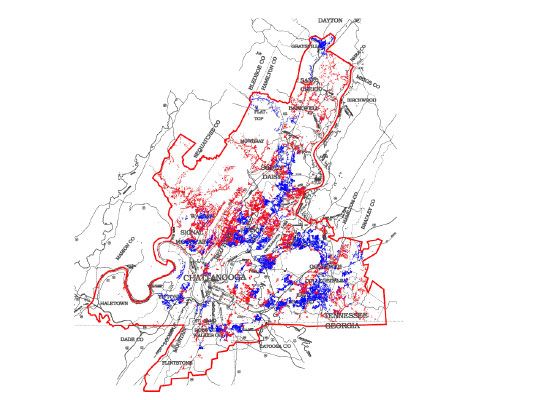In July of last year, we reported on the first real test of EPB Chattanooga’s smart grid investment that occurred when a powerful windstorm roared through the city in Tennessee.
The utility, which serves 170,000 customers, found that it cut its power outages by at least half, according to Jim Glass, manager of smart grid development at EPB Chattanooga.
At the time, Glass said it was difficult to put a monetary figure on the savings. But recent data has done just that. The utility has been installing 1,200 S&C IntelliRupter automated switches on the distribution grid since early 2011. The utility also boasts one of the fastest internet pipelines in the world and a full rollout of smart meters.
It is the switches that paid off in the summer storm. The utility had a 55 percent reduction in duration of outages, and the expedited restoration saved EPB Chattanooga $1.4 million.
"This marks a major step in understanding the value proposition for self-healing feeders. To be able to point to $1.4 million dollars in operational savings without the inclusion of social costs will drastically help utilities build business cases for their public utility commissions," said Ben Kellison, smart grid analyst for GTM Research. "However, continued difficulties with ROI calculation will persist for self-healing feeders as utilities often adopt vegetation management in concert with feeder upgrades as part of a reliability program. This leaves it to the statisticians to determine the benefits of chainsaws versus vacuum chambers."
There were 58 million avoided minutes of customer interruption -- and most customers were restored about 1.5 days earlier than would have been possible before the smart grid upgrades.
The map below shows customers who experienced an outage as part of the storm on July 5, 2012 as red dots. Blue dots are customers that would have been impacted before the distribution automation upgrade, but were not affected during the actual storm.

There is still a lot of red on the map, but there were thousands of customers who had their outages restored remotely, vastly cutting down the duration of the outage. “If we can make a significant impact on outages in our community, we’re improving the bottom line for businesses."
EPB Chattanooga is not the only utility installing smart switches, but it is far and away the leader in automated feeder switches right now, given its 600-square-mile territory. The stimulus funds have helped to install more than 5,700 automated feeder switches nationwide, with more than 1,500 deployed at Southern Company (but over a much larger territory than Chattanooga). Many other utilities, including Consolidated Edison, Duke Energy Carolinas, Avista, NSTAR, CenterPoint and others also have hundreds of automated switches, according to smartgrid.gov. Other utilities, such as Vermont Electric Cooperative, are also reaping the benefits of its smart grid during storms.
The calculation of savings from smart grid investments is an important step forward for any utility that has invested in technology. For those that are considering the investment, data from utilities that are leading in smart grid is increasingly necessary.
Last year, Maryland’s governor proposed to force his state’s utilities to harden their systems against outages, according to the Baltimore Sun. The move comes after sudden thunderstorms storms known as 'derechos' ripped across the mid-Atlantic region in late June, leaving millions without power from Ohio to Virginia.
But hardening the system is often less about cutting-edge technology and more about increased tree-trimming or burying power lines. However, as more data emerges from progressive utilities on outage avoidance and cost savings, the case for distribution automation will likely only grow stronger.



